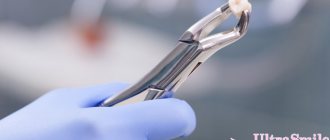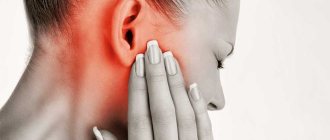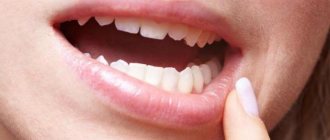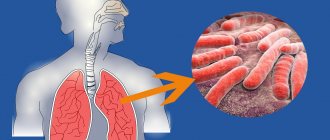Symptoms of the disease
In diseases that cause damage to the palate, the following symptoms are observed:
- Acute painful sensations. Discomfort both at rest and when exposed to the mucous membrane of the palate. If you tolerate this manifestation, the pain will intensify to the point of difficulty swallowing.
- Painful sensations due to fungal infections in the oral cavity. Symptoms: the appearance of ulcers, erosions and plaque on the palate, cheeks and inside of the lip, and a burning sensation will be felt at the location of the ulcers. There may be a putrid odor from the mouth.
- Pain due to inflammation of the oral mucosa. Symptoms: redness and increased swelling, increased body temperature, chills, muscle weakness and increased salivation due to swelling of the tongue.
- Pain due to dental diseases. Symptoms: pain in teeth, gums, increased swelling of the cheek.
- Painful sensations when bacteria an open wound. Symptoms: pus formation, fever, nausea, migraine and fever. This condition is very dangerous and can lead to intoxication of the body.
- Oncological diseases. Symptoms: weakness, general malaise of the body, loss of appetite and swelling of the palate.
If at least one of the listed symptoms occurs, you should consult a specialist for advice. Only he will be able to make an accurate diagnosis and prescribe effective treatment aimed at eliminating pain and inflammation of the oral cavity.
Mechanical damage
The hard structure of the palate is covered with a thin mucous membrane, which is easily injured.
Causes
Causes injuries to the palate:
- solid foods (crackers, nuts);
- fragments of fish or meat bones;
- hot liquids (lovers of “scalding” coffee or tea suffer)4
- swallowing solid objects (small children put small parts of toys in their mouths).
Violation of the integrity of the mucous membrane causes pain discomfort.
Symptoms
The upper palate in the mouth hurts moderately, pain discomfort intensifies while eating or touching.
Patients often note that pain in the palate appears only with mechanical irritation. There are no external signs of changes in the damaged palate: slight redness may appear in the injured area.
Treatment
No specific therapy is required for minor injuries. The patient is recommended to eat soft food, and to prevent secondary infection, rinse with soda solution or use antiseptics (Miramistin, Chlorhexidine).
It is necessary to monitor the condition of the sky. If signs of infection appear (swelling, hyperemia, constant pain), immediately seek medical help.
For uninfected minor injuries, the palate will not hurt much and medication is not required . If pain discomfort causes inconvenience, then in the first days you can take an analgesic tablet without exceeding the therapeutic dosage.
Who to contact
For minor injuries, medical attention is not required; you need to rinse your mouth and eat soft foods. If the palate begins to swell and become inflamed, you should consult a dentist or ENT specialist.
Why does the roof of my mouth hurt?
There are a large number of reasons that provoke the occurrence of pain in the oral cavity.
Mechanical damage to the mucous membrane of the palate
As a rule, this situation occurs due to careless consumption of solid foods or when coming into contact with food or drinks that are too hot. At the same time, wounds and scratches form in sensitive tissues. If hygiene rules are not followed, pathogenic bacteria can penetrate into them.
As a result, an inflammatory process develops in the oral cavity, redness and swelling appear on the palate, blisters and ulcers appear, which cause a lot of unpleasant sensations.
Mouth infection
One of the main factors in the development of palate pain is inflammatory processes. When the palate becomes inflamed, bacteria actively multiply in the oral cavity, plaque and ulcers, redness and swelling appear. In this case, the patient experiences symptoms such as dryness, burning and pain.
Acute respiratory diseases of the respiratory tract
Soreness of the palate can be one of the many symptoms of tonsillitis, tonsillitis and pharyngitis. In this case, the tonsils become enlarged, and the soft palate is involved in the general inflammatory process. Here, immediate treatment is necessary, since advanced cases of the disease can lead to serious complications.
Neuralgia
The soft palate contains many nerve endings. When jaw diseases occur, painful sensations affect not only the palate, but also other facial areas. In case of neuralgia, treatment can only be prescribed by an experienced specialist.
Dental diseases
Pain can occur due to caries, pulpitis, after tooth extraction, prosthetics, filling, as well as due to the inflammatory process of the gums and palate or the appearance of any complications due to unqualified treatment.
If pain occurs after dental procedures and lasts for a short time, there is no need to worry, this is a natural process. If discomfort after visiting the dentist does not leave you for a day or more, you should contact another professional. If the root cause of the pain is eliminated, the discomfort in the palate will go away on its own.
Leukoplakia
Changes in the tissues of the oral mucosa occur with constant consumption of food that is too hot or too cold, or when the palate is damaged by objects or food with sharp edges. In this case, keratinization of the mucous membrane occurs, the palate becomes hard, dryness in the oral cavity and the appearance of a white coating are observed.
Sialometaplasia
The disease is characterized by the appearance of benign formations in the oral cavity. The bubbles grow to a certain size and then open, forming wounds.
Palate pain is one of the symptoms of this disease. Also characteristic symptoms are pain and swelling. After the wound has completely healed, the discomfort disappears.
Burns of the oral mucosa
Damage may be chemical or thermal in nature. Thermal burns can be caused by consuming hot food and drinks, and chemical burns can result from alkalis, acids and household cleaners accidentally entering the mouth.
Herpes
Herpes rashes can appear not only on the body, but also in the mouth and palate. This manifestation is observed quite rarely, but if it happens to you, you will have to deal with painful rashes and endure discomfort.
Recommendations after tooth extraction
Usually, after tooth extraction, the dentist gives recommendations to the patient. If they are strictly followed, you can either avoid toothache completely or significantly reduce its intensity and duration.
Recommendations for patients after tooth extraction:
- Avoid physical activity. Rest should be passive whenever possible. At least during the first two days after tooth extraction. Do not eat during the first 2–3 hours after the procedure. Food injures the fresh wound and leads to pain, which can subsequently persist for a long time. For several days, you should not chew food on the side where the tooth was removed. Avoid smoking and drinking alcoholic beverages for several days. Cigarette smoke and ethyl alcohol irritate the mucous membrane of the gums, causing the development and intensification of pain. Do not touch the hole with your tongue, touch it with toothpicks or any other objects. There is a blood clot in the socket, which is very important for healing. If food particles get into the hole while chewing, then you should not try to remove them: you can remove the clot along with them. It is better to rinse your mouth after eating. Mouth rinses after tooth extraction are useful. But you shouldn't start them from day one. If the pain intensifies, you can take painkillers. But before doing this, it is highly advisable to consult a doctor.
When to see a specialist
At the slightest manifestations that cause discomfort and anxiety, you should consult a specialist. But not every person will act in this way when the slightest change occurs in the functioning of the body. You should be concerned if:
- increased pain;
- increased swelling and inflammation;
- increased temperature ;
- crumbling and softening of dental tissue;
- of erosions and compactions in the sky
- weakening of taste sensations;
- severe pain when eating food and liquids;
- the appearance of suppuration.
If treatment is not started in time, this can lead to the disease moving to a more complex stage, so you should not endure the pain and ignore the symptoms.
6.4. Ice-frost deposits.
Frequent fogs and liquid precipitation during the cold season contribute to the appearance of ice deposits on parts of structures, television and radio towers, on branches and tree trunks, etc.
Ice deposits vary in their structure and appearance, but practically distinguish types of icing such as black ice, rime, wet snow deposits and complex deposits. Each of them, at any intensity, significantly complicates the work of many sectors of the urban economy (energy systems and communication lines, gardening, aviation, railway and road transport), and if they are significant in size, they are considered dangerous atmospheric phenomena.
A study of synoptic conditions for the formation of icing in the North-West of the European territory of the USSR, including Leningrad [24], showed that ice and complex deposits are mainly of frontal origin and are most often associated with warm fronts. Ice formation is also possible in a homogeneous air mass, but this rarely happens and the icing process here usually proceeds slowly. Unlike ice, frost is, as a rule, an intra-mass formation that most often occurs in anticyclones.
Observations of icing have been carried out visually in Leningrad since 1936. In addition, since 1953, observations of ice-frost deposits on the wire of the icing machine have been carried out. In addition to determining the type of icing, these observations include measuring the size and mass of deposits, as well as determining the stages of growth, steady state and destruction of deposits from the moment of their appearance on the icing platform until complete disappearance.
Icing of wires in Leningrad occurs from October to April. The dates of formation and destruction of icing for various types are indicated in Table. 70.
During the season, the city experiences an average of 31 days with icing of all types (see Table 50 of the Appendix). However, in the 1959-60 season, the number of days with deposits was almost twice as high as the long-term average and was the largest (57) for the entire period of instrumental observations (1963-1977). There were also seasons when ice-frost phenomena were observed relatively rarely, on ]b... 17 days per season (1964-65, 1969-70, 1970-71).
Most often, icing of wires occurs in December-February with a maximum in January (10.4 days). During these months, icing occurs almost every year.
Of all the types of icing in Leningrad, crystalline frost is most often observed. On average, there are 18 days with crystalline frost per season, but in the 1955-56 season the number of days with frost reached 41. Glaze is observed much less frequently than crystalline frost. It accounts for only eight days per season and only in the 1971-72 season there were 15 days with ice. Other types of icing are relatively rare.
Typically, icing of wires in Leningrad lasts less than a day, and only in 5 °/o cases does the duration of icing exceed two days (Table 71). Complex deposits remain on the wires longer than other deposits (on average 37 hours) (Table 72). The duration of ice is usually 9 hours, but in December 1960. ice was observed continuously for 56 hours. The process of ice growth in Leningrad lasts on average about 4 hours. The longest continuous duration of complex sedimentation (161 hours) was noted in January 1960, and crystalline frost - in January 1968 (326 h) .
The degree of danger of icing is characterized not only by the frequency of repetition of ice-frost deposits and the duration of their impact, but also by the size of the deposit, which refers to the size of the deposit in diameter (large to small) and mass. With an increase in the size and mass of ice deposits, the load on various types of structures increases, and when designing overhead power transmission and communication lines, as is known, the ice load is the main one and its underestimation leads to frequent accidents on the lines. In Leningrad, according to observations at a glaze machine, the size and mass of glaze-frost deposits are usually small. In all cases in the central part of the city, the diameter of the ice did not exceed 9 mm, taking into account the diameter of the wire, crystalline frost - 49 mm, . complex deposits - 19 mm. The maximum weight per meter of wire with a diameter of 5 mm is only 91 g (see Table 51 of the Appendix). It is practically important to know the probabilistic values of ice loads (possible once in a given number of years). In Leningrad, on a glaze machine, once every 10 years, the load from glaze-frost deposits does not exceed 60 g/m (Table 73), which corresponds to region I of glaze according to work [27].
In fact, the formation of ice and frost on real objects and on the wires of existing power and communication lines does not fully correspond to the conditions of icing on an ice-covered machine. These differences are determined primarily by the height of the location of the volume n of the wires, as well as a number of technical features (configuration and size of the volume, the structure of its surface, for overhead lines - the diameter of the wire, the voltage of the electric current, etc.). As altitude increases in the lower layer of the atmosphere, the formation of ice and frost, as a rule, occurs much more intensely than at the level of the ice dam, and the size and mass of deposits increase with altitude. Since in Leningrad there are no direct measurements of the amount of ice-frost deposits at heights, the ice load in these cases is estimated by various calculation methods.
Thus, using observational data on ice conditions [79], the maximum probabilistic values of ice loads on the wires of existing overhead power lines were obtained (Table 73). The calculation was made for the wire that is most often used in the construction of lines (diameter 10 mm at a height of 10 m). From the table 73 it can be seen that in the climatic conditions of Leningrad, once every 10 years, the maximum icy load on such a wire is 210 g/m, and exceeds the value of the maximum load of the same probability on an icy machine by more than three times.
For high-rise buildings and structures (above 100 m), the maximum and probabilistic values of ice loads were calculated based on observational data on low-level clouds and temperature and wind conditions at standard aerological levels (80) (Table 74). In contrast to cloudiness, supercooled liquid precipitation plays a very insignificant role in the formation of ice and frost in the lower layer of the atmosphere at an altitude of 100...600 m and was not taken into account. From those given in table. 74 data shows that in Leningrad at an altitude of 100 m the load from ice-frost deposits, possible once every 10 years, reaches 1.5 kg/m, and at an altitude of 300 and 500 m it exceeds this value by two and three times, respectively. . This distribution of ice loads over heights is caused by the fact that wind speed and the duration of existence of lower-tier clouds increase with height and, therefore, the number of supercooled drops deposited on an object increases.
In the practice of construction design, however, to calculate ice loads, a special climatic parameter is used - the thickness of the ice wall [77, 85]. Ice wall thickness is expressed in millimeters and refers to the deposition of cylindrical ice at its highest density (0.9 g/cm3). The zoning of the territory of the USSR according to ice in the current regulatory documents was also carried out for the thickness of the ice wall, but reduced to a height of 10 m and a wire diameter of 10 mm, with a repeatability cycle of deposits once every 5 and 10 years. According to this map, Leningrad belongs to low-ice region I, in which, with the indicated probability, there may be ice-frost deposits corresponding to an ice wall thickness of 5 mm. to move to other wire diameters, heights and other repeatability, appropriate coefficients are introduced.
Diagnostics
If characteristic symptoms occur, it is not recommended to delay contacting a specialist. Timely assistance can prevent the occurrence of complications and various pathologies, and alleviate the painful condition. First of all, the doctor, based on a thorough examination and complaints of the patient, finds out the causes of painful sensations in the palate.
After this, the therapist prescribes a culture from the oral cavity and a complete blood test. After receiving the results, the examinee is sent to a specialist with a narrow specialization: otolaryngologist, dentist, oncologist. The patient is also recommended to undergo a full examination of the body in order to identify the presence or absence of damage to internal organs.
Peculiarities
It is not difficult to understand why the palate often suffers. This part of the oral cavity is also involved in the process of chewing various types of food.
The palate consists of a hard area covered with delicate tissue. It is the mucous membrane that bears the brunt of the blow when it comes into contact with harmful substances or hot food.
The top layer is penetrated by a large number of nerve endings: any damage to the thin, sensitive tissue causes a lot of unpleasant sensations.
Treatment
Treatment of the inflammatory process of the palate depends on what caused the disease. The main preventive measure characteristic of palate disease is to reduce the influence of factors that aggravate the inflammatory process.
If the palate is inflamed and hurts, treatment measures will depend on the cause of the manifestation:
Treatment for mechanical damage to the palate and inflammation of the oral cavity
The specialist recommends the use of traditional medicine both for oral administration and for rinsing the mouth, as well as taking topical medications to relieve pain. Many herbal infusions provide an excellent disinfecting effect, thereby preventing the penetration of pathogenic bacteria and microorganisms into wounds.
Ulcers and erosions in the oral cavity are eliminated with agents that have healing and analgesic properties. These medications include: Lidohor and Chlorophyllipt.
Treatment for dental diseases
The therapeutic effect will primarily be aimed not only at relieving discomfort, but also at eliminating the root cause. First, you need to treat diseased teeth, which are a factor that provokes infection.
Before visiting the dentist, you should not self-medicate, as you can harm yourself. As a rule, during dental treatment, the oral cavity is treated with disinfectants and painkillers.
Treatment for stomatitis
The use of internal antifungal drugs is appropriate here, as well as the use of ointments, sprays and gels while maintaining oral hygiene. The most effective antimicrobial agents include Stomatofit and Rotocan.
Treatment for tumor formations in the oral cavity
First, the patient must undergo a full examination to identify the nature and nature of the tumor formations. Both malignant and benign tumors of the oral cavity can be eliminated only by surgical intervention.
6.3. Fog and haze
Fog is a collection of water droplets or ice crystals suspended in the air that reduce visibility to less than 1 km.
Fog in the city is one of the dangerous atmospheric phenomena. Deterioration of visibility during fog significantly complicates the normal operation of all types of transport. In addition, relative humidity close to 100% in fogs increases the corrosion of metals and metal structures and the aging of paint and varnish coatings. Harmful impurities emitted by industrial enterprises dissolve in drops of water that form fog. Then deposited on the walls of buildings and structures, they heavily pollute them and shorten their service life. Due to high humidity and saturation with harmful impurities, urban fogs pose a certain danger to human health.
Fogs in Leningrad are determined by the peculiarities of atmospheric circulation in the North-West of the European Union, primarily by the development of cyclonic activity throughout the year, but especially during the cold period. When relatively warm and humid sea air moves from the Atlantic to the colder underlying land surface and cools, advection fogs are formed. In addition, radiation fogs of local origin may occur in Leningrad, associated with the cooling of the air layer from the earth's surface at night in clear weather. Other types of fogs are usually special cases of these two main ones.
In Leningrad, there are an average of 29 days with fog per year (Table 63). In some years, depending on the characteristics of atmospheric circulation, the number of days with fog may differ significantly from the long-term average. For the period from 1938 to 1976, the largest number of days with fog per year was 53 (1939), and the smallest was 10 (1973). The variability in the number of days with fog in individual months is represented by the standard deviation, the values of which range from 0.68 days in July to 2.8 days in March. The most favorable conditions for the development of fogs in Leningrad are created during the cold period (from October to March), coinciding with the period of increased cyclonic activity,
which accounts for 72% of the annual number of days with fog. At this time, there are an average of 3...4 days with fog per month. As a rule, advective fogs predominate, due to the intense and frequent transport of warm, moist air by western and western currents to the cold surface of the land. The number of days during the cold period with advective fogs, according to G.I. Osipova [69], is about 60% of their total number during this period.
Fogs in Leningrad form much less frequently in the warm half of the year. The number of days with them per month varies from 0.5 in June and July to 3 in September, and in 60...70% of the years in June and July, fogs are not observed at all (Table 64). But at the same time, there are years when in August there are up to 5... 6 days with fog.
For the warm period, in contrast to the cold period, radiation fogs are most characteristic. They account for about 65% of days with fogs during the warm period, and they usually form in stable air masses during calm weather or light winds. As a rule, summer radiation fogs in Leningrad occur at night or before sunrise; during the day, such fog quickly dissipates.
The largest number of days with fog in a month, equal to 11, was observed in September 1938. However, even in any month of the cold period, when fogs are observed most often, fog does not occur every year. In December, for example, they are not observed approximately once every 10 years, and in February - once every 7 years.
The average total duration of fogs in Leningrad per year is 107 hours. In the cold period, fogs are not only more frequent than in the warm period, but also longer. Their total duration, equal to 80 hours, is three times longer than in the warm half of the year. In the annual course, fogs have the longest duration in December (18 hours), and the shortest (0.7 hours) is noted in Nyun (Table 65).
The duration of fogs per day with fog, which characterizes their stability, is also slightly longer in the cold period than in the warm period (Table 65), and on average for the year it is 3.7 hours.
The continuous duration of fogs (average and greatest) in various months is given in Table. 66.
The diurnal variation in the duration of fogs in all months of the year is expressed quite clearly: the duration of fogs in the second half of the night and the first half of the day is longer than the duration of fogs in the rest of the day. In the cold half of the year, fogs most often (35 hours) are observed from 6 to 12 hours (Table 67), and in the warm half of the year, after midnight and reach their greatest development in the predawn hours. Their longest duration (14 hours) occurs at night.
The absence of wind has a significant influence on the formation and especially on the persistence of fog in Leningrad. Increasing wind leads to the dispersion of fog or its transition to low clouds.
In most cases, the formation of advective fogs in Leningrad, both in the cold and in the warm half of the year, is caused by the arrival of air masses with the westerly flow. Fog is less likely to occur with northerly and northeasterly winds.
The frequency of fogs and their duration are highly variable in space. In addition to weather conditions, the formation of oxo is influenced by the nature of the underlying surface, relief, and proximity to a reservoir. Even within Leningrad, in different areas, the number of days with fog is not the same. If in the central part of the city the number of days with p-khan per year is 29, then at the station. Nevskaya, located near the Neva Bay, their number increases to 39. In the rugged, elevated terrain of the suburbs of the Karelian Isthmus, which is especially favorable for the formation of fog, the number of days with fog is 2... 2.5 times greater than in the city.
Haze in Leningrad is observed much more often than fog. It is observed on average every second day per year (Table 68) and can not only be a continuation of fog when it dissipates, but also arise as an independent atmospheric phenomenon. Horizontal visibility during haze, depending on its intensity, ranges from 1 to 10 km. The conditions for haze formation are the same. as for fog,. therefore, most often it occurs in the cold half of the year (62% of the total number of days with haze). Every month at this time there can be 17...21 days with fog, which is five times the number of days with fog. The fewest days with haze are in May-July, when the number of days with them does not exceed 7... 9. In Leningrad there are more days with haze than in the coastal strip (Lisiy Nos, Lomonosov), and almost as many as in elevated suburban areas , remote from the bay (Voeikovo, Pushkin, etc.) (Table b8).
The duration of the haze in Leningrad is quite long. Its total duration per year is 1897 hours (Table 69) and varies significantly depending on the time of year. In the cold period, the duration of the haze is 2.4 times longer than in the warm period, and is 1334 hours. The most hours with haze are in November (261 hours), and the least in May-July (52... 65 hours).
Human palate: inflammation, tumors, functions of the palate, treatment
1 cm in the sky... I'll go to the appointment tomorrow... what's embarrassing is that I'm pinching because of this ((They also advised me to use Cholisal, so I applied it... it stings ((Why will it bleed?? And if it’s not surgically cut off or done operation - then WHERE DOES IT GO??? Today I saw the doctor, he says this is the norm, but while they removed the chains, removed the load...... he said that he does not see much inflammation... But for me it was inflamed for a long time, about 6 months, and yes , also due to the movement of neighboring teeth. As soon as they put a rubber chain in - it was swollen, they took it off - the inflammation went away.
The gums above the upper teeth in front are also inflamed, orth says that this is most likely due to the rubber chain - they removed it... Now I look at my front teeth because of this inflamed gum - they look much smaller...
Inflammation of the gums - causes and what can be done
Inflammatory processes occurring in the oral cavity can often affect the upper palate, which causes some discomfort and pain. Some patients do not take this problem seriously, but in vain! Soreness, swelling and redness of the palate may indicate serious illness, so the symptoms cannot be ignored. At the first signs of inflammation, consult a doctor. How to treat and what to do if a child has similar problems?
But the first thing we will get acquainted with is what function the palate performs in the human body. The palate is the vault of the mouth, separating the oral cavity from the nasopharynx, which is connected to the larynx. There are two parts of the palate - hard and soft. The second is soft muscle tissue, where the inflammatory process most often occurs.
What to do if your palate hurts
Treatment is prescribed by the dentist. If your mucous membrane suddenly hurts, blisters or bubbles appear, redness or swelling develops, seek help.
Treatment of inflammatory processes
Treatment methods:
- For candidiasis, antibiotics or antifungal tablets prescribed by a doctor are required. To treat fungus, apply Candide gel, take Acyclovir;
- treat the oral cavity with furatsilin, a weak solution of potassium permanganate, and herbal decoctions;
- for stomatitis, Rotokan, Stomatidin, Miramistin, Lugol, Hexoral spray are effective;
- use Propolis spray, rosehip oil, Carotilin preparation;
- Avoid foods that irritate the delicate mucous membranes; eat only pureed, liquid foods.
Treatment methods for neuralgia
Therapy:
- If a painful phenomenon is detected, the dentist will refer you to an oral surgeon for examination and order an x-ray. Lidocaine injections are necessary to relieve pain;
- Treatment of the inflammatory process in the temporomandibular joint consists of taking antibiotics, physiotherapy, compresses with bee venom, and removing pus, if any, in the jaw area.
Find out all about the advantages and disadvantages of basal dental implants.
Effective methods for removing tartar at home are described on this page.
Follow the link https://u-zubnogo.com/detskaya/zabolevaniya/stomatit.html and read about the symptoms and treatment of herpetic stomatitis in children.
Treatment of oral burns
How to proceed:
- rinse your mouth with lukewarm clean water, apply an anesthetic gel, for example, Metrogyl Denta;
- after eating, use the solution: a glass of water – a teaspoon of calendula tincture;
- If you burn your mucous membrane with hot food, rinse your mouth with lukewarm water until the burning and pain subsides. A decoction of oak bark, calendula, chamomile or sage will speed up healing;
- a protective film on the mucous membrane is formed by a mixture of 250 ml of cool water and whipped egg white (rinse your mouth with an astringent several times a day);
- chew a peeled aloe leaf or treat the palate with juice from the fleshy leaves 3-4 times a day;
- In case of a chemical burn, consult a doctor immediately. Be sure to remove the harmful substance and rinse your mouth with clean water several times. If the mucous membrane is severely damaged, call an ambulance.
Therapy for trauma to the palate
What to do:
- a decoction of medicinal herbs will help relieve redness and swelling at the site of injury (the ingredients are the same as for the treatment of other inflammatory diseases);
- Visit your dentist and find out what rinse solution your doctor recommends. When a wound becomes infected, Miramistin and Rotokan are effective;
- Kalanchoe or aloe juice disinfects affected areas well. Several times throughout the day, gently lubricate the swollen area with healing juice;
- In case of severe pain in the mucous membrane, on the recommendation of the dentist, use anesthetic gel or tablets.
Folk remedies
Plant components are often used to treat diseases. For this purpose, many traditional medicine recipes have been created that can help with pain in the palate or other symptoms in the oral cavity.
Traditional medicine is very effective at the beginning of the development of diseases, inflammations and other processes.
Among the effective means are:
- Onion peel for the inflammatory process. For treatment, you need to peel 1 onion and peel. Add 3 tbsp to 500 ml of cold water. husks and set the broth to boil. When the water boils, turn off the heat and leave for 8 hours. Before use, strain the product and gargle your throat and palate with the broth all day.
- Horse sorrel root for mouth diseases. To prepare, add 100 grams of the plant to a liter of water and place it on low heat. When the water boils, simmer for a quarter of an hour and let cool for 1-2 hours. The broth should be at room temperature, then filter it and rinse your mouth and throat.
- Plantain leaves for mucosal lesions. In this case, the plant is crushed into powder with a mortar or coffee grinder. For 2 tbsp. plantain, add 200 ml of boiling water, after 15 minutes everything is filtered, the infusion is ready for rinsing the mouth.
- Onion juice and aloe for pain relief. Juices are mixed 1 tsp. and add 3 tsp. water. Use a rinse to relieve pain.
It is recommended to use folk remedies if there are no allergies or other negative reactions of the body to them.
There is no need to use prescriptions without consulting a doctor.
Medical classification of sore throat
Regardless of whether the pathology develops in a child or an adult, the classification of pain remains identical. Most often, together with wheezing in the chest, they signal the onset of the development of acute respiratory diseases, sore throat. You should expect such an unfavorable outcome after hypothermia.
Schematically, such discomfort is divided not only by where its source is located: on the left or on the right, but also by nature. There are three categories of pain:
- cutting;
- pulsating;
- spicy.
Moreover, the pain intensifies closer to night, when the victim begins to prepare for bed. One of the three common types of lesions can be determined by reflex swallowing.
When it becomes clear that the syndrome is becoming almost unbearable, folk remedies will not help. Such a sharp transition signals the development of complications, which are most often caused by tonsillitis.
Next, the specialist will have to determine the specific location of the lesion during the examination, and only then the doctor will ask you to swallow saliva. Based on the sensations during a simple test, it will be possible to more accurately classify the degree of damage, which is especially important during pregnancy.
But all of the above, accompanied by a headache, refers to direct pathologies of the throat. What to do if the most common diagnoses are not confirmed? Then problems with swallowing are associated with abnormalities in the functioning of other organs, including an anatomically incorrectly located tongue.
The latter is congenital in nature, but even if it is unclear where the difficulty with swallowing came from appeared relatively recently, this is not a reason to postpone a visit to the therapist. After examining the supposedly affected part and the sternum, he will redirect you to a specialist to understand the original source of the disease.
Regardless of whether the victim suffers from sharp pain or periodic, aching pain, there is no point in postponing a visit to the clinic. Examining the throat from the right side through a mirror will not always allow the average person to detect the symptoms of a sore throat. Often it “settles” in the lingual tonsil.
When the syndrome does not go away, and the source of the lesion is felt in the lower part of the throat or in the middle, then this most likely indicates the onset of tonsillitis of the lingual tonsil. If discomfort is felt on the mucous membrane, then this may indicate the entry of a foreign object such as small fish bones that did not reach the stomach.
Some patients mistakenly believe that chewing and swallowing solid food will allow them to get rid of a foreign object. In fact, such an experiment will not lead to any good, because an abscess may form in the nasopharynx, which will have to be removed surgically.











